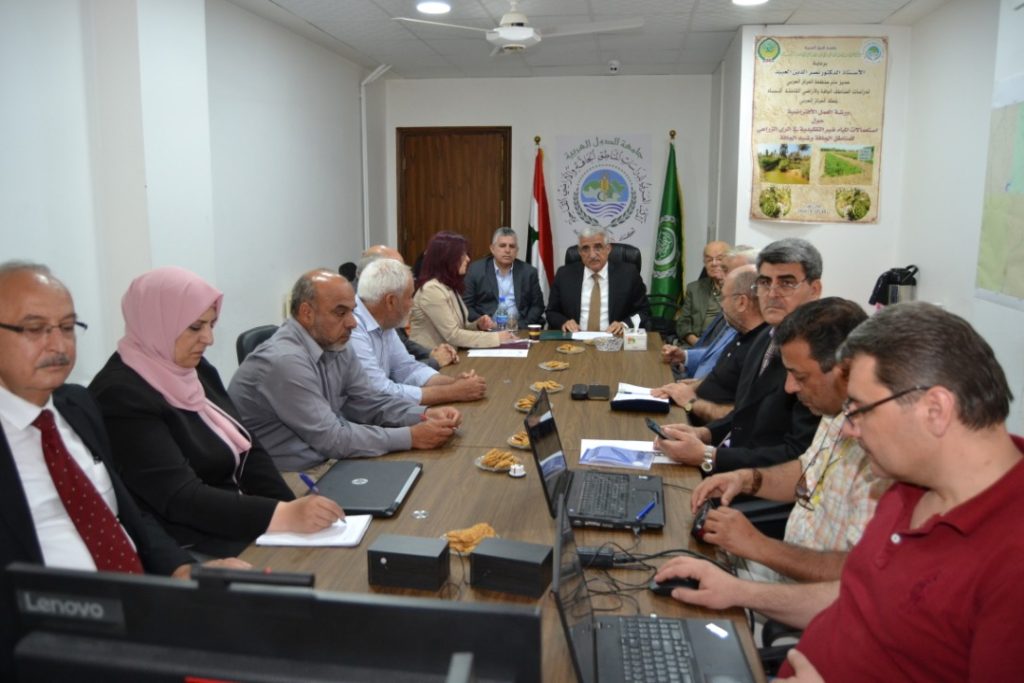The ACSAD’s scientific forum on ACSAD’s role in enabling Arab women and preserving biodiversity

The forum held today via video conference aims to shed light on the significance of women’s integration in applying the UN conventions’ activities on biodiversity as well as the international guidance in preserving the natural resources, maintaining ecological systems to be reflected positively in human communities whose pillar is the woman who is the man’s partner in agricultural activities.
The ACASD’s Director-General, Dr Naser Edin Obeid, confirmed in a speech that the Arab Centre implemented dozens of development projects to preserve, extend, and benefit from biodiversity. Moreover, ACSAD carried out more than seventeen projects to improve the plant cover and preserve biodiversity throughout the Arab world in a distance of 42 million hectares, such as the project of Plant Cover Development in the Al-Hammad area in Syria, Iraq, Jordan, and Saudi Arabia in the space of three million hectares, the Al-Bishri Mountain, in addition to the projects of Al-Basra and Sabha in Jordan, Om-Jamat Project in the north of Kurdufan in Sudan. Many other projects in livestock aim to genetic improvement of animals’ inventory, their numbers, and the available fodder resources, preparing the maps including the livestock distribution in the Arab world. Also, ACSAD constructed gene banks, centers for conveying and freezing embryos and artificial insemination to preserve and sustain the genetic variation.
He said that the ACSAD organization, in cooperation with the Canadian International Development Research Centre “IDRC,” constructed a plant data bank in the Arab arid area “ADAP”, which includes 3110 plant varieties, that is being updated now.
Dr Obeid explained that ACSAD worked to integrally involved women in managing projects by selecting experts from the indigenous and local communities since the woman is the partner in making decisions and assisting in observing the projects; she is at ACSAD the researcher, technician, and worker because her integration leads to the best results in sustaining and managing natural resources.
He also added: “the features of this phase I honor to lead are represented by building the bridges of cooperation and coordination with the interested national institutions in the Arab countries as well as the Arab, regional, and international organisations. We enhance the efforts aiming to keep up with the global guidance in applying the international convention’s activities of biodiversity and the United Nations’ guidance to restore the ecological systems as well as biodiversity maintenance. Moreover, we work to develop the applied scientific research, convey and settle modern technologies to increase productivity, make a solid net of work relationships with the scientific and technical institutions, and coordinate vitally with them to implement the SDGs integrally.” He also emphasised that their goal is to enhance the institutional construction and motivate the performance to achieve a distinct paradigm shift that contributes to improving food and water security in the Arab region.
The ACSAD’s Director-General indicated the massive achievements accomplished by the Arab Centre in applying agricultural development that included all the Arab countries, where ACSAD succeeded in eliciting 83 varieties of Wheat and Barley, which are being implanted widely in the Arab countries. The Centre constructed sixteen dams in the coastal mountains to serve the peasants of the thirsty villages in Syria, Lebanon, and Libya; it also distributed more than 13 thousand heads of high-productivity Awasi sheep, Shami goats, and camels to the Arab countries to benefit from them in improving their livestock productivity. It also distributed 3.5 million seedlings of olive, pistachio, almond and others from fruit trees and trained more than 25 thousand Arab agricultural technicians in various agrarian science.
Dr Obeid manifested the role of ACSAD in restoring the degraded lands and their impact on reviving plants and animals, which assists in increasing biodiversity in the arid and semi-arid areas suffering from water scarcity.




